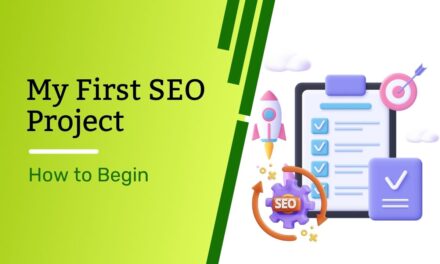A Comprehensive Guide
In the ever-evolving realm of SEO, delving into profound keyword research forms the cornerstone of a robust strategy. Below is an exhaustive walkthrough, guiding you through the intricacies of keyword exploration and analysis:
Gaining Insight into Your Business Landscape
Gaining insight into your business landscape is a crucial first step in developing a successful SEO strategy. This involves delving deep into the core aspects of your business, industry, and the preferences of your target audience. Understanding the intricacies of your business allows you to identify key topics and themes that define your content and resonate with your audience.
Start by conducting a thorough analysis of your products, services, and unique selling propositions. Define the key attributes that set your business apart from competitors. Consider the pain points and needs of your target audience, aiming to align your content with solutions that directly address their concerns.
Furthermore, keep a pulse on industry trends, advancements, and emerging topics. Staying informed about the broader landscape in which your business operates enables you to anticipate shifts in customer behavior and preferences. This foundational knowledge serves as the bedrock for the subsequent stages of keyword research, ensuring that your strategy is not only informed by current trends but also tailored to meet the evolving needs of your audience.
In essence, gaining insight into your business landscape provides the context necessary for the strategic selection of keywords that will effectively drive organic traffic and contribute to the overall success of your SEO efforts.
Seed Keywords: The Foundation of Your Strategy
Seed keywords serve as the fundamental building blocks of your SEO strategy, forming the bedrock upon which your entire keyword research process rests. These are the primary terms or phrases that encapsulate the essence of your business, products, services, or content. Identifying and refining your seed keywords is a critical step in constructing a robust keyword strategy.
To uncover your seed keywords, consider the language that your target audience commonly uses when searching for products or information related to your industry. Think about the overarching themes that define your business and the primary solutions you offer. These keywords are typically broad and capture the general topics relevant to your niche.
Once you’ve established your seed keywords, they become the starting point for further exploration and expansion. These foundational terms are input into advanced keyword research tools such as Google Keyword Planner, SEMrush, or Ahrefs. The insights gained from these tools help you unearth related terms, assess search volumes, and understand the competitive landscape around your seed keywords.
The significance of seed keywords lies in their ability to set the tone for your entire keyword strategy. They provide a roadmap for identifying not only high-volume and competitive keywords but also the more specific, long-tail variations that cater to niche interests within your industry. In essence, seed keywords are the cornerstone upon which you build a comprehensive and targeted approach to optimizing your online presence for search engines.
Harnessing the Power of Keyword Research Tools
Harnessing the power of keyword research tools is a pivotal aspect of any effective SEO strategy. These tools empower you with valuable insights into the search behavior of your target audience and help refine your keyword selection for maximum impact. Here’s a deeper exploration of how these tools contribute to the success of your keyword research:
- Google Keyword Planner:
- This tool, provided by Google, allows you to discover new keywords related to your business. It provides historical data on search volume, competition, and can suggest bid estimates for paid campaigns. By entering your seed keywords, you gain access to a wealth of information that aids in identifying relevant terms and understanding the potential reach of your selected keywords.
- SEMrush:
- SEMrush is a versatile tool that goes beyond keyword research. It enables you to analyze the keywords your competitors are ranking for, providing insights into potential gaps or opportunities in your own strategy. Additionally, SEMrush offers data on organic search results, paid search advertising, and backlinking, providing a comprehensive view of your online presence.
- Ahrefs:
- Ahrefs is renowned for its backlink analysis, but it’s also a robust keyword research tool. It helps you identify not only what keywords your pages are ranking for but also offers insights into the search volume, CPC (Cost Per Click), and keyword difficulty. This information is invaluable for making informed decisions about which keywords to prioritize.
- Ubersuggest:
- Ubersuggest, developed by Neil Patel, is a user-friendly tool that provides keyword ideas and content suggestions. It also allows you to analyze the top-ranking pages for specific keywords, helping you understand the content landscape and competition in your niche.
By leveraging these tools, you gain a comprehensive understanding of the competitive landscape, search volumes, and potential opportunities within your industry. They enable you to refine your keyword strategy, ensuring that your efforts are focused on terms that are not only relevant but also have the potential to drive meaningful traffic to your website. Regularly utilizing these tools as part of your ongoing SEO efforts helps you stay agile and adapt to changes in search trends and user behavior.
Navigating the World of Long-Tail Keywords
Navigating the world of long-tail keywords is a strategic move that involves delving into the specific and nuanced aspects of user search queries. Unlike broad, general terms (such as seed keywords), long-tail keywords are more detailed and typically consist of three or more words. Here’s a deeper exploration of the importance and benefits of incorporating long-tail keywords into your SEO strategy:
- Specificity and Intent:
- Long-tail keywords are highly specific, reflecting the detailed nature of what users are searching for. By incorporating these terms into your content, you’re better aligning with the exact intent of users. This specificity not only improves the relevance of your content but also increases the likelihood of attracting visitors genuinely interested in your offerings.
- Lower Competition:
- Long-tail keywords often have lower search volumes compared to broader terms. However, they also tend to have lower competition. This creates an opportunity for your content to rank more easily and effectively, especially in niche markets. Focusing on long-tail keywords allows you to capture a more targeted audience that may be closer to making a purchasing decision.
- Content Diversification:
- Incorporating long-tail keywords naturally leads to diversifying your content. As you create content around these more specific terms, you’re addressing a variety of niche topics within your industry. This not only caters to a broader audience but also positions your website as a valuable resource for in-depth information.
- Voice Search Optimization:
- With the rise of voice-activated search, long-tail keywords have become increasingly important. Users tend to use more natural language when speaking compared to typing. Optimizing for long-tail keywords ensures that your content aligns with the conversational queries users make through voice search, enhancing your chances of appearing in relevant voice search results.
- Conversion Potential:
- Users searching with long-tail keywords often have a clearer understanding of what they’re looking for. This specificity can translate into higher conversion rates as you address their needs more precisely. Long-tail keywords are particularly effective for businesses with niche products or services.
Incorporating long-tail keywords into your SEO strategy requires a nuanced approach. Utilize keyword research tools to identify relevant long-tail variations, and strategically integrate them into your content. By doing so, you not only enhance the visibility of your website in search results but also position yourself to capture the attention of a more qualified and engaged audience.
Deciphering User Intent: A Critical Element
Deciphering user intent is a critical element in the realm of SEO, representing the foundational understanding of why users conduct specific searches. It involves going beyond the literal interpretation of keywords and delving into the motivations, desires, and objectives that drive users to seek information or make online queries. Here’s a deeper exploration of why understanding user intent is essential for a successful SEO strategy:
- Enhanced Relevance:
- By deciphering user intent, you align your content more closely with what users are seeking. This ensures that the information you provide is not only relevant to their queries but also addresses their underlying needs. This emphasis on relevance contributes to a positive user experience, increasing the likelihood of users engaging with and returning to your site.
- Diverse Search Intent Types:
- User intent can be categorized into various types, including informational, navigational, and transactional. Informational intent seeks answers or knowledge, navigational intent aims to find a specific website or page, and transactional intent indicates a desire to make a purchase or take a specific action. Understanding these nuances allows you to tailor your content to meet the specific needs of users at different stages of the customer journey.
- Content Optimization:
- Knowing user intent enables you to optimize your content accordingly. If a keyword primarily reflects informational intent, your content should focus on providing valuable information. For transactional intent, the emphasis should be on facilitating a seamless conversion process. This targeted approach ensures that your content not only ranks well in search results but also satisfies users’ immediate requirements.
- Adaptation to Evolving Trends:
- User intent is dynamic and can evolve with changes in technology, user behavior, and industry trends. Regularly monitoring and adapting to shifts in user intent allow you to stay ahead of the curve. This adaptability ensures that your content remains aligned with what users are currently looking for, contributing to the long-term effectiveness of your SEO strategy.
- Competitive Advantage:
- Understanding user intent provides a competitive advantage by allowing you to differentiate your content from competitors. By addressing user needs more comprehensively and effectively, you position your website as a valuable resource within your industry, fostering user trust and loyalty.
In summary, deciphering user intent is not merely about ranking for specific keywords; it’s about meeting the underlying needs of your audience. This understanding forms the basis for creating content that resonates, engages, and ultimately fulfills the expectations of users, contributing to the overall success of your SEO efforts.
Strategic Competitor Analysis
Analyze the keyword strategies employed by your competitors. Identify gaps and opportunities where you can carve a distinctive niche and offer unique value through your content.
Strategic competitor analysis is a vital component of a comprehensive SEO strategy, offering valuable insights into the tactics and approaches employed by competitors within your industry. By understanding how others are approaching their online presence, you can identify both opportunities and gaps in the market. Here’s a deeper exploration of why strategic competitor analysis is essential for SEO success:
- Identification of Keyword Opportunities:
- Analyzing the keyword strategies of your competitors allows you to identify potential gaps or untapped opportunities in your own approach. By understanding the keywords they are targeting and ranking for, you can uncover new terms to incorporate into your strategy, helping you expand your reach and visibility in search engine results.
- Insights into Content Gaps:
- Examining the content strategies of competitors provides insights into the topics and themes they are covering. This analysis helps you identify content gaps in your own strategy, allowing you to create valuable, unique, and comprehensive content that distinguishes your website from others in the field. Addressing content gaps enhances your authority in the industry and attracts a wider audience.
- Backlink Analysis:
- Backlinks play a crucial role in SEO, and analyzing the backlink profiles of competitors can reveal valuable opportunities for link building. Identify high-quality backlinks that competitors have acquired and explore ways to secure similar links for your own site. This not only contributes to your website’s authority but also helps improve your search engine rankings.
- Understanding Competitor Positioning:
- Analyzing the overall positioning of competitors in the market provides context for your own strategy. Identify their strengths, weaknesses, and unique selling propositions. This understanding helps you position your brand and offerings in a way that stands out and offers a competitive advantage.
- Adapting to Industry Trends:
- Competitor analysis allows you to stay informed about industry trends and emerging best practices. By observing the strategies that are yielding success for competitors, you can adapt your approach to align with current trends, ensuring that your SEO strategy remains relevant and effective in the ever-changing digital landscape.
- Risk Mitigation:
- Understanding the strategies of your competitors also helps you identify potential risks and challenges. If a competitor is ranking well for key terms, it may require a more nuanced approach to compete effectively. Conversely, if a competitor is not optimizing effectively, it presents an opportunity for you to capitalize on their weaknesses.
Incorporating strategic competitor analysis into your SEO strategy is an ongoing process. Regularly monitor the activities of key competitors, adapt your approach based on changing dynamics, and leverage the insights gained to continually refine and strengthen your own online presence. Ultimately, competitor analysis is a proactive measure that empowers you to make informed decisions, optimize your strategy, and stay ahead in the competitive digital landscape.
User Experience: A Priority in Keyword Selection
Prioritizing user experience in keyword selection is a foundational principle that goes beyond mere search engine rankings. It emphasizes the importance of creating content that not only aligns with the language users employ in their searches but also delivers genuine value, relevance, and a seamless experience. Here’s a more detailed exploration of why user experience should be a priority in keyword selection:
- Relevance and Intent Alignment:
- Selecting keywords based on user experience involves ensuring that the chosen terms align with the intent behind users’ searches. It’s not just about matching keywords for the sake of ranking but understanding the context and delivering content that precisely meets the user’s expectations. This alignment enhances the overall relevance of your content.
- Natural Language Integration:
- Users often search using natural language and conversational queries, especially with the rise of voice search. Prioritizing user experience in keyword selection means incorporating terms that feel natural within the content. This approach not only improves the readability of your content but also resonates better with users, leading to higher engagement.
- Mobile-Friendly Considerations:
- With a significant portion of internet users accessing content via mobile devices, prioritizing user experience includes selecting keywords with mobile-friendliness in mind. This involves considering the shorter, more concise nature of mobile searches and tailoring your keyword strategy to cater to on-the-go users.
- Page Loading Speed:
- User experience extends beyond the content itself to the technical aspects of a website. Keywords selected should not lead to content-heavy pages that compromise loading speed. Slow-loading pages can result in a poor user experience and negatively impact rankings. Therefore, it’s crucial to balance keyword relevance with page performance.
- User-Friendly Navigation:
- Keywords should guide users to content that is easily navigable and structured logically. User-friendly navigation contributes to a positive experience, encouraging users to explore more of your site. When selecting keywords, consider the user’s journey and ensure that the content they land on is intuitively organized.
- Minimizing Bounce Rates:
- Prioritizing user experience in keyword selection aims to reduce bounce rates, meaning users leave the site shortly after arriving. By choosing keywords that accurately represent your content and meet user expectations, you can decrease the likelihood of users bouncing, signaling to search engines that your content is relevant and valuable.
- Long-Term Engagement:
- The ultimate goal is not just to attract users but to keep them engaged over the long term. By selecting keywords that align with user intent and consistently delivering high-quality, user-centric content, you build trust and loyalty. This sustained engagement positively influences your site’s authority and rankings.
In summary, user experience should be at the forefront of keyword selection, guiding the creation of content that not only satisfies search engine algorithms but also resonates with and meets the needs of your audience. By prioritizing user experience, you not only enhance your website’s performance in search results but also foster a positive and lasting relationship with your users.
Seasonality and Trends: Adapting Your Strategy
Account for seasonality and emerging trends in your industry when crafting your keyword strategy. Adjust your approach to leverage timely topics that align with the current landscape.
Balancing Keyword Difficulty: A Calculated Approach
Balancing keyword difficulty requires a calculated approach that takes into account the competitive landscape, your resources, and your overarching business goals. It involves a strategic evaluation of the difficulty associated with ranking for specific keywords and finding the right mix that aligns with your capacity for investment and desired outcomes. Here’s a more detailed exploration of how to strike the right balance in keyword difficulty within the context of gaining insight into your business landscape:
- Competitive Analysis:
- Understanding the competitiveness of keywords is integral to striking the right balance. Conduct a thorough competitive analysis to identify the difficulty levels associated with the keywords relevant to your business. This analysis should consider the authority of competitors, the quality of their content, and their backlink profiles.
- Resource Allocation:
- Balancing keyword difficulty requires a realistic assessment of your resources. Evaluate your team’s capabilities, budget constraints, and the time available for SEO efforts. If you’re operating in a highly competitive space, focusing on long-tail keywords with lower difficulty might be a prudent strategy, allowing you to make steady progress without overextending your resources.
- Short-Term vs. Long-Term Goals:
- Consider your business’s short-term and long-term goals when assessing keyword difficulty. Short-term goals may involve targeting less competitive keywords to gain traction quickly, while long-term goals may require a more strategic approach, investing in higher difficulty keywords that yield substantial benefits over time.
- Niche Opportunities:
- Gaining insight into your business landscape includes identifying niche opportunities where competition might be lower. Explore keywords that are specific to your industry or cater to a unique aspect of your products or services. Targeting these niches allows you to establish authority and visibility without facing intense competition.
- Keyword Funneling:
- Implement a keyword funneling strategy that involves targeting a mix of keywords with varying difficulty levels. Start with less competitive terms to generate initial traffic and visibility. As your website gains authority, progressively target more challenging keywords to broaden your reach and capture a larger share of the market.
- Monitoring and Adaptation:
- Keyword difficulty is not static; it can change over time. Regularly monitor the performance of your keywords, track changes in competitiveness, and adapt your strategy accordingly. Being agile and responsive to shifts in the competitive landscape ensures that you maintain a balanced and effective approach to keyword selection.
- Quality Over Quantity:
- Emphasize the quality of your content over the sheer quantity of keywords. Striking the right balance involves creating high-quality, relevant content that resonates with your target audience. Search engines increasingly prioritize user satisfaction, and quality content is a key factor in achieving and maintaining favorable rankings.
In summary, gaining insight into your business landscape serves as the foundation for balancing keyword difficulty. It enables you to make informed decisions about which keywords align with your business objectives and resources. A calculated approach involves thoughtful consideration of competition, resource allocation, and a dynamic strategy that evolves based on the ever-changing SEO landscape.
Building a Holistic Keyword List
Building a holistic keyword list involves compiling a comprehensive set of primary, secondary, and long-tail keywords that collectively reflect the diverse facets of your business, industry, and target audience. This process requires strategic organization based on relevance and search volume. By encompassing a wide spectrum of keywords, you ensure that your SEO strategy is well-rounded, capturing the attention of users at various stages of their journey and maximizing your visibility across different search queries. A holistic keyword list serves as the foundation for a robust SEO strategy, allowing you to address niche topics, stay competitive, and meet the evolving needs of your audience. Regular refinement of this list, informed by industry shifts and user behavior, ensures ongoing optimization and effectiveness.
Continuous Refinement: Adapting to Changes
Continuous refinement in SEO involves an ongoing commitment to adaptability in response to changes in industry trends, user behavior, and search engine algorithms. It is a dynamic process that necessitates regular review and adjustment of keyword strategies, content optimization, and overall SEO tactics. By staying attuned to shifts in the digital landscape, businesses can ensure their online presence remains relevant and effective. This iterative approach not only enhances visibility but also fosters resilience in the face of evolving challenges, positioning the website to meet the ever-changing demands of both users and search engines.
Seamless Integration of Keywords in Content
The seamless integration of keywords into content is a delicate art that involves incorporating targeted terms naturally within the context of the material. It goes beyond mere placement and involves crafting engaging, informative, and user-centric content that resonates with both search engines and human readers. Keyword usage should enhance the overall readability and value of the content, rather than disrupt the flow or appear forced. Striking the right balance ensures that the content not only ranks well in search results but also provides a satisfying user experience. Moreover, the integration of keywords should align with the intent behind user searches, contributing to the relevancy and authority of the content. Regularly revisiting and optimizing this integration ensures that your content remains in sync with evolving search engine algorithms and user preferences.
Embark on this journey of comprehensive keyword research, laying the groundwork for a finely tuned SEO strategy aligned with your business goals and tailored to meet the needs of your audience.





